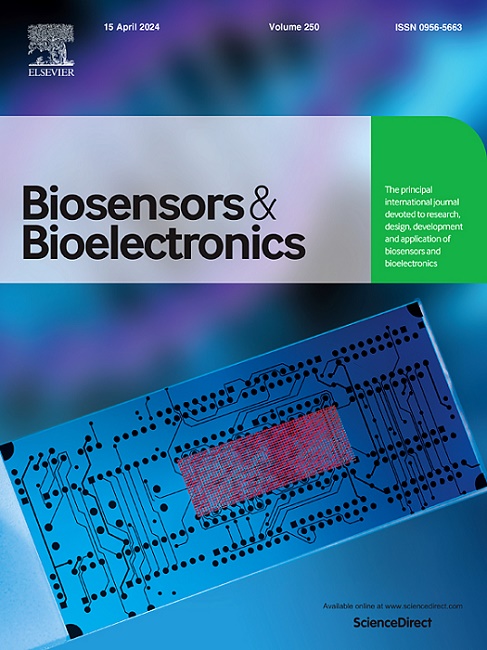Monitoring of inflammatory preterm responses via myometrial cell based multimodal electrophysiological and optical biosensing platform
IF 10.7
1区 生物学
Q1 BIOPHYSICS
引用次数: 0
Abstract
Preterm birth (PTB) remains a leading cause of neonatal morbidity and mortality, with inflammation-induced PTB posing a significant challenge due to its complex pathophysiology. To address this, we developed an in vitro platform utilizing hTERT-immortalized human myometrial (hTERT-HM) cells integrated with a multielectrode array (MEA) biosensing system and optical calcium imaging. Compared to primary uterine myometrial cells, hTERT-HM cells exhibit superior reproducibility, high scalability, and convenient manipulation, facilitating the consistent and large-scale investigations. This advanced system facilitates simultaneous real-time monitoring of electrophysiological activity and intracellular calcium transient, providing detailed insights into uterine cell behavior during inflammatory PTB. Our study revealed that oxytocin (OT) induces regular contractions in hTERT-HM cells, and the synergistic effect of OT and lipopolysaccharide (LPS) disrupts electrophysiological patterns and calcium signaling, closely mimicking the pathophysiology of inflammation-induced PTB. Meanwhile, magnesium sulfate is validated to effectively suppress OT-induced calcium release and mitigate LPS-triggered irregular electrophysiological signals. By integrating advanced biosensing technologies and advantages of hTERT-HM cells, this platform offers a reliable, reproducible model to investigate the mechanisms of inflammation-driven PTB and further develop targeted therapeutic interventions.
求助全文
约1分钟内获得全文
求助全文
来源期刊

Biosensors and Bioelectronics
工程技术-电化学
CiteScore
20.80
自引率
7.10%
发文量
1006
审稿时长
29 days
期刊介绍:
Biosensors & Bioelectronics, along with its open access companion journal Biosensors & Bioelectronics: X, is the leading international publication in the field of biosensors and bioelectronics. It covers research, design, development, and application of biosensors, which are analytical devices incorporating biological materials with physicochemical transducers. These devices, including sensors, DNA chips, electronic noses, and lab-on-a-chip, produce digital signals proportional to specific analytes. Examples include immunosensors and enzyme-based biosensors, applied in various fields such as medicine, environmental monitoring, and food industry. The journal also focuses on molecular and supramolecular structures for enhancing device performance.
 求助内容:
求助内容: 应助结果提醒方式:
应助结果提醒方式:


